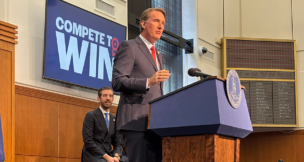November US homes sales rose from the previous month, but down from 2024 as prices climb
US existing home sales rose slightly in November but fell from a year earlier for the first time since May, as high prices and affordability challenges persist.
Virginia sees home sales decline across major markets
Inventory climbed in both Hampton Roads and Northern Virginia in November, but fewer deals closed as home sales declined.
Federal agency boosts size of most single-family loans the government can guarantee to $832,750
FHFA will raise the 2026 conforming loan limit to $832,750 for most US homes, reflecting higher prices. High-cost areas like LA and NYC will exceed $1.24 million
New limits for a rent algorithm that prosecutors say let landlords drive up prices
RealPage agreed to a DOJ settlement banning its rent-pricing software from using real-time confidential data, after allegations of illegal algorithmic collusion.
Virginia housing market showed momentum in October
Virginia’s housing market picked up in October, with buyers taking advantage of lower mortgage rates and a larger selection of homes.
BARBARA M. WOLCOTT
CHAIRMAN AND PRINCIPAL BROKER BERKSHIRE HATHAWAY HOMESERVICES RW TOWNE REALTY CHESAPEAKE
Virginia sees home sales rise in major markets
Home sales rose year-over-year in Northern Virginia, Central Virginia and Hampton Roads in September, a sign of a stable market.
Back to school, back to buying? How fall affects Northern Virginia homebuyers
As the school year begins in Northern Virginia, many might assume the housing market cools as quickly as the morning air. While spring often grabs the spotlight as the busiest buying season, fall in our region has its own rhythm — shaped by shifting priorities, changing inventory, and unique economic forces. Spring and Summer 2025: […]
New York AG Letitia James charged with mortgage fraud over Norfolk home
New York AG Letitia James was indicted on mortgage fraud after Trump pushed DOJ to pursue charges against his political foes.
Virginia housing sales remained flat in August but prices rose
Virginia Realtors reports that the state's housing market sales remain essentially unchanged from last year’s August numbers.
Stanley Martin Homes to acquire North Carolina homebuilder
Reston homebuilder Stanley Martin Homes has entered into an agreement to acquire North Carolina-based Windsor Homes’ assets and operations.
Aug. housing inventory, prices rise across Virginia regions
Housing inventory and sold prices rose last month in Northern Virginia, Hampton Roads and Central Virginia, but home sales declined in Hampton Roads.




















